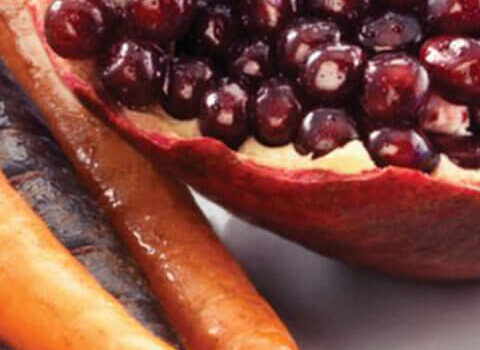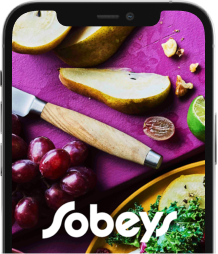Consuming a variety of fruits and veggies is the key to a truly super diet. Here’s our guide to choosing and eating the most nutritious produce.
We’re proud of — and picky about — our gorgeous selection of fresh fruits and vegetables. After all, when you walk through the produce department, you’ll find some of nature’s most impressive nutritional all-stars.
But how do you know which ones to choose? You’re probably familiar with the term “superfoods,” used to describe fruits and vegetables that are especially nutritious. “Superfoods are foods that are nutrient dense,” explains Kristy Hogger, a registered dietitian. “They contain significant levels of plant compounds called phytochemicals, which may provide health benefits or reduce the risk of disease.”
Truth is, every fruit and vegetable has a unique range of nutrients to offer, whether or not it’s making the six o’clock news – it’s variety that’s the key. We think the easiest nutrition advice to remember is: Eat a rainbow of fruits and veggies. Many of the most nutritious foods are ones you likely already enjoy. Here’s a list of nutrient-packed produce to inspire healthier meals and snacks.
Pick a rainbow in our produce aisles:
Blueberries. Tangy-sweet blueberries make any dish more vibrant. Both fresh and frozen varieties are rich sources of phytochemicals, including specific antioxidants called anthocyanins. Hogger explains that antioxidants are protective chemicals that help fight and repair cell damage, a process that "happens with age and can increase risk for many common diseases, such as heart disease and cancer." And while the specific mechanics are still being studied, evidence is showing that "a diet rich in antioxidants can help offer protection against these diseases," she says.
Make it easy: Toss fresh blueberries into a salad, or pack some as a mid-afternoon snack. Use frozen ones in pancakes, muffins and breakfast smoothies, or bring the aroma and taste of summer back to your kitchen with a blueberry grunt.
Yellow mangoes. Juicy mangoes, with their intense, sweet-tart tropical flavour, are available year-round. "They contain phytochemicals and antioxidants, and are also an excellent source of vitamin C and a source of folate," Hogger says. You can buy them green, as they ripen nicely at home. Store them in a fruit bowl at room temperature.
Make it easy: Toss mango slices into fruit or vegetable salads, or serve alongside chicken, pork or curry. We love starting the day off on a sweet note with a rich-tasting mango smoothie.
Green broccoli: Remember when your folks withheld dessert until you'd finished your broccoli? They had a good reason. "Just a half-cup (125 mL) serving is a source of both folate and vitamin A, as well as an excellent source of vitamin C," says Hogger. Broccoli also delivers sulforaphane, a plant compound research suggests may help prevent some forms of cancer.
Make it easy: Broccoli doesn't have to be boring. Sprinkle lightly steamed florets with sharp Parmesan cheese, lemon zest and a squeeze of fresh lemon juice for a citrusy side dish. We also like to add broccoli to frittatas or omelettes for a quick breakfast-for-dinner meal.
Red apples: Whether stacked in a fruit bowl or shoved into a lunch bag, the humble apple is often taken for granted. But this modest fruit boasts beneficial antioxidants and phytochemicals. In addition, "a medium apple is a source of fibre and vitamin C," says Hogger. Vitamin C helps maintain our bones, cartilage, teeth and gums.
Make it easy: One of our favourite snacks: Slices of red and green apple served with chunks of brie, aged cheddar or blue cheese. Or punch up brunch by topping waffles or pancakes with pan-sautéed apple slices.
Orange sweet potatoes: They were once reserved for Thanksgiving and Christmas, but we're thrilled to see that sweet potatoes are now a staple in many Canadian homes. It makes sense. "Sweet potatoes are rich in antioxidants and are very high in beta-carotene, which is converted to vitamin A in the body," Hogger says. Essential to good vision, vitamin A also helps keep the skin and immune system healthy.
Make it easy: Toss medium whole sweet potatoes in the oven when baking chicken breasts or pork chops to serve as an alternative to regular baked potatoes. Make extra – they reheat well for lunch. Or cut them into rounds or wedges, drizzle with a little olive oil and roast until nicely browned.
White mushrooms: We know mushrooms aren't strictly vegetables, but we're excited about the scrumptious selection that's readily available: oyster, shiitake, portobello, cremini, white button and king are just a few varieties. Plus, they have a lot more nutrients than you might expect. "Mushrooms contain vitamins, minerals and antioxidants," says Hogger. "And they are the only vegetables that naturally contain vitamin D, which Canadians often don't get enough of due to lack of exposure to sunlight, especially in the winter." This vitamin helps build strong bones and teeth.
Make it easy: We like mushrooms' earthy flavour in stews, soups and sauces. Or cook up a mushroom risotto, stirring in fresh spinach just at the end for a burst of green.
Related Better Food Guides:
- Better Food Guide to Apples
- Better Food Guide to Potatoes
- Better Food Guide to Mushrooms








